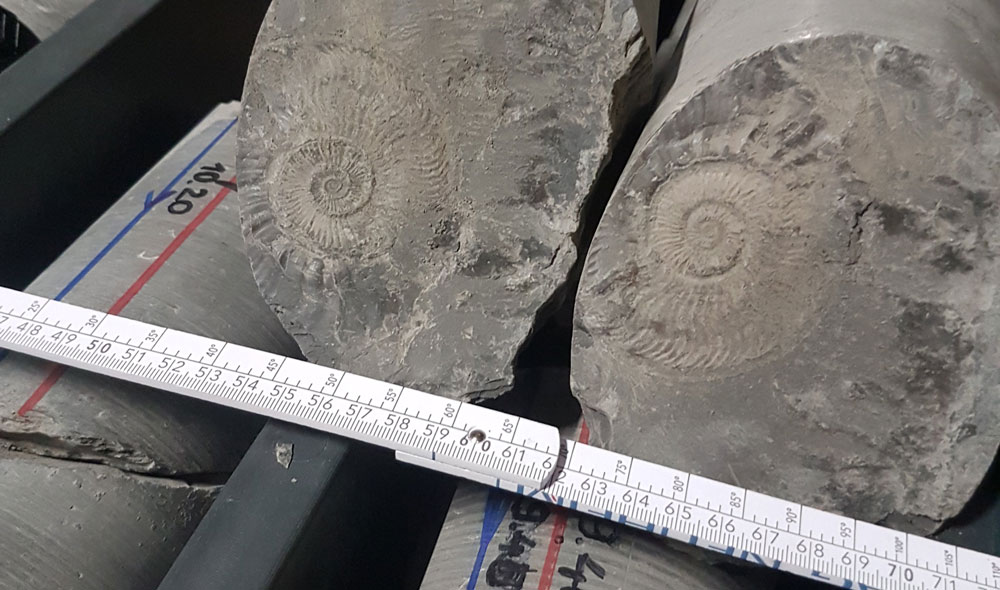2019-02-04
Can deep boreholes trigger earthquakes?
More than 100 deep boreholes have already been drilled to depths of 400 m or more in Switzerland. Among other things, they have served to explore the subsoil, whether for tunnelling, exploiting geothermal energy, as potential sites for final repositories, prospecting for raw materials or tapping into sources of groundwater and thermal water. Hundreds of thousands of such boreholes have been sunk all over the world. So far, to our knowledge, no damaging earthquakes have been triggered solely by drilling deep boreholes. Consequently, the simple answer to the question asked above is that instances of damage caused solely by sinking deep boreholes, without any further interventions in the subsoil, are extremely unlikely. However, micro-earthquakes with magnitudes of less than 1 have been documented in association with the drilling of deep boreholes. Thanks to a dense seismic network, such microquakes can be reliably recorded. It can then be better determined whether such seisms are related to the sinking of deep boreholes or triggered by natural causes.
Read more...Despite the very large number of deep boreholes drilled worldwide, data on earthquakes occurring in connection with them are rather sparse. One reason for this is that the probability of such quakes is very low. Another is that many deep boreholes have been drilled in uninhabited areas, so potentially noticeable quakes may not have been felt and reported by the public. In many places, such boreholes have not been - and are still not being - seismically monitored. Consequently, it is impossible to reliably record smaller induced earthquakes. In Switzerland, for example, a number of microquakes were recorded when the borehole for the Basel geothermal energy project was cemented. The strongest of these had a magnitude of 0.7, meaning that it released 500 times less energy than a magnitude 2.5 quake. Earthquakes above this magnitude can usually be felt.
The physical processes behind earthquakes triggered in certain circumstances by drilling boreholes are well understood. Deep boreholes sometimes alter local stresses and pore pressures in rock, and in some cases this can reactivate a nearby tectonically pre-stressed fracture, causing an earthquake. However, such stress changes usually only occur in the following two situations: firstly, when drilling into a stratum with high fluid pressures. In this case, under certain conditions, the rock fluid (liquid or gas) can find its way into the borehole, causing overpressure that can usually be reduced in a controlled manner. Alternatively, the borehole is sealed at the corresponding place deep underground. Secondly, when boring into a very liquid-permeable stratum or rock of very low strength. If this happens, some of the drilling fluid or cement may enter the surrounding rock. The drilling fluid is needed to bring the drilling dust to the surface and stabilise the borehole during the driving process. Once a section has been drilled, the borehole is lined with cemented pipe to keep it open in the long term. In most cases, though, stress changes only affect small rock volumes. So the probability of activating quite a large, pre-stressed fracture and thus triggering a fairly large, potentially noticeable earthquake is extremely low.
The Swiss Seismological Service (SED) at ETH Zurich does not normally recommend seismic monitoring in its Guide for Managing Induced Seismicity for deep boreholes (e.g. exploratory drilling). Nonetheless, to record evidence and clarify the distinction between natural and induced seismicity, it may make sense to install an additional monitoring station near a drill site. For this very purpose, to cite just one example, the SED is currently consolidating its network on behalf of Switzerland's National Cooperative for the Disposal of Radioactive Waste (Nagra) with a view to monitoring exploratory drilling in northeastern Switzerland.
